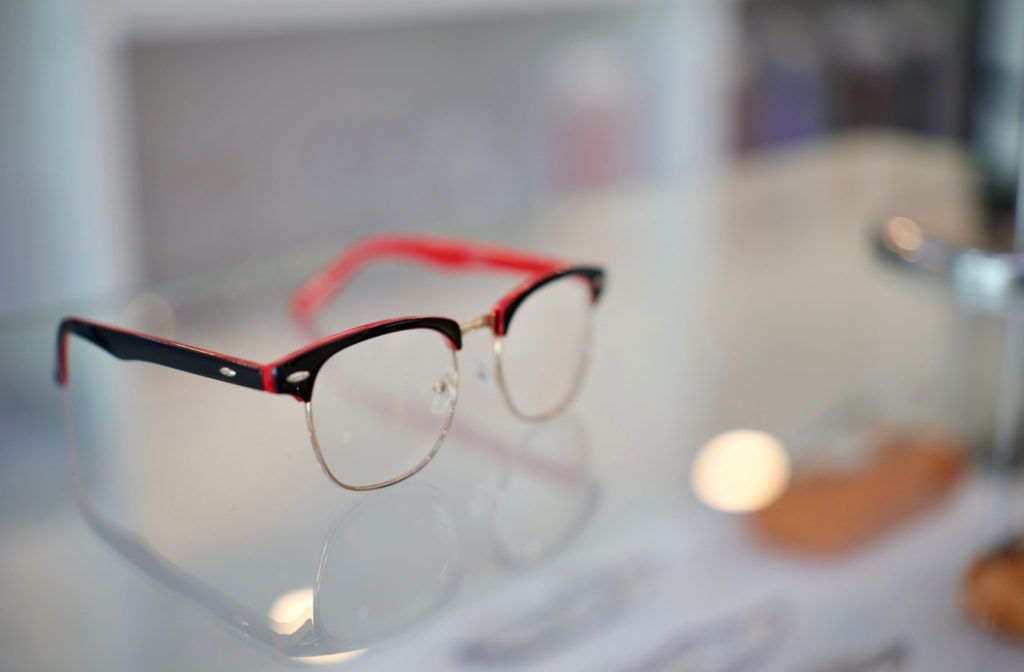Over the years, reading small print and seeing text on your phone can become a challenge. Your optometrist may recommend reading glasses after an eye exam, but what if you already wear glasses for another vision issue?
Progressive lenses combine multiple prescriptions in one pair of glasses without a distracting line like bifocals or trifocals. That means less switching glasses and more style, comfort, and clarity.
Exploring Presbyopia
One thing that never changes as we age is the fact that things are always changing. Your eyesight is no different. Eventually, a vision issue most people deal with is presbyopia, which is the gradual loss of the ability to focus on objects up close. It’s a natural part of aging and occurs when the eye’s lens becomes more rigid and is less able to change its shape to accommodate for focusing distance.
You’ll probably start noticing changes after 40, such as holding reading materials further away or using bigger fonts on your phone. If you had good vision before this, you may only need reading glasses. However, for people with another vision problem, whether that be nearsightedness, farsightedness, or astigmatism, you may need lenses that combine your different prescriptions.
Bifocals, Trifocals, & Progressive Lenses
The idea behind multifocal glasses is simple but effective: you require different prescriptions, so put all those prescriptions on a single lens. In bifocals, the top part of the lens allows you to see distant objects clearly, while the bottom corrects for close-up vision. Most people look down to read something, so this can feel natural. Trifocals are similar but with three focus areas.
However, traditional multifocal lenses have distance lines separating the zones. Even if the line isn’t visible, you’re still jumping between prescription strengths, which can be disorienting.
Unlike bifocals or trifocals, progressive lenses seamlessly transition between three corrections for near, intermediate, and distance vision, avoiding harsh lines or image jumps. This blending allows you to comfortably move from the reading zone at the bottom to the intermediate and then the distance fields as you move up.
Benefits of Progressive Lenses
Progressive lenses have many benefits worth considering when compared to single lenses and even other types of multifocal lenses.
Less Time Switching Glasses
The most immediate benefit progressive lenses offer is the ability to see at various ranges without the hassle of swapping glasses. This simplifies your eyewear routine and creates less clutter in your purse or bag since you don’t need to carry multiple glasses.
Progressive lenses also have an area for intermediate vision that bifocals don’t. This can give people with presbyopia a zone for seeing something that sits just on the edge of their focusing distance, such as when working on a computer.
No Distracting Lines
Unlike bifocals, progressive lenses eliminate the distracting line between distances to provide a seamless transition. This line can cause images to ‘jump’ when moving from distance to near vision.
While a small number of people may find progressive lenses disorienting, they generally offer a wider range of natural vision by removing this line. This can make it easier to participate in activities that benefit from a wide field of view, such as driving.
A More Youthful Appearance
It’s hard to ignore the social impressions bifocals have. People tend to associate their hard line with aging, so some wearers prefer the aesthetics progressive lenses provide.
While this may seem minor to some, it’s important to be comfortable in your glasses. If you’re embarrassed to wear your bifocals, you may avoid using them when you need to see clearly. Don’t avoid your glasses when you can get a pair that fits your style.

Choosing the Right Progressive Lenses
Not all eyes—or lifestyles—are the same. Whether you spend a lot of time on computers, are outdoorsy, or are an avid reader, you need progressive lenses that suit your needs. Most people can use standard lenses, but choices abound, from enhanced reading sections to wider intermediate zones, helping your lens align with your life.
You’ll typically need frames big enough to accommodate the progression of power. Your optometrist can help you pick a frame and lens that works.
Caring for Your Lenses
Progressive lenses are an investment in your vision, so you’ll want to help them perform as they should by cleaning them. Avoid using your sleeve, shirt, or scarf to clean your glasses, even if you’re desperate. These can damage your lenses and cost you in the long run. Instead, use a microfiber cloth.
Many people use a cleaning spray specially formulated for cleaning glasses, which typically works best. However, you can also use mild, lotion-free dish soap. Simply put a single drop on both sides of the lenses and rub gently. Make sure you rinse the lenses off well if you use soap—you don’t want any getting in your eyes!
Store your glasses in a case when you’re not using them to protect against scratches and dust.
Enjoy Vision’s Full Spectrum with Progressive Lenses
The shift to progressive lenses is more than an optical upgrade. It’s a choice that helps you avoid a life of “one moment, let me find my glasses.” They are all your vision needs compacted into one stylish frame.
Whether you already wear bifocal and are sick of that distracting line or you’ve been having trouble reading lately, Foothill Optometric Group can help you experience the joy of progressive clarity. Book your eye exam today, and let’s learn if progressive lenses work for you together.



